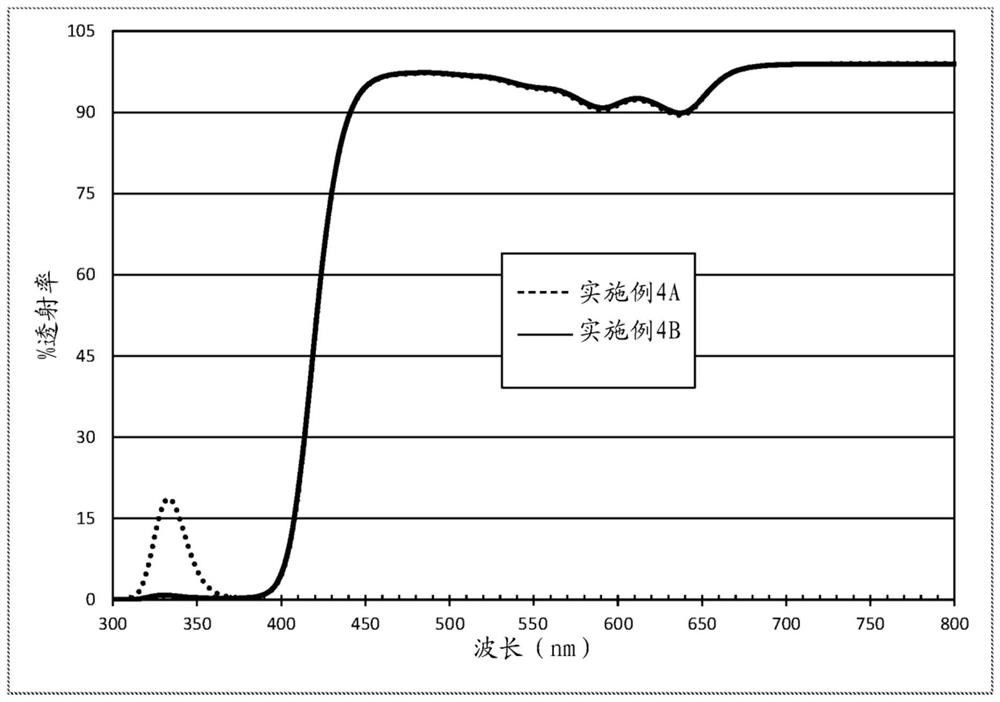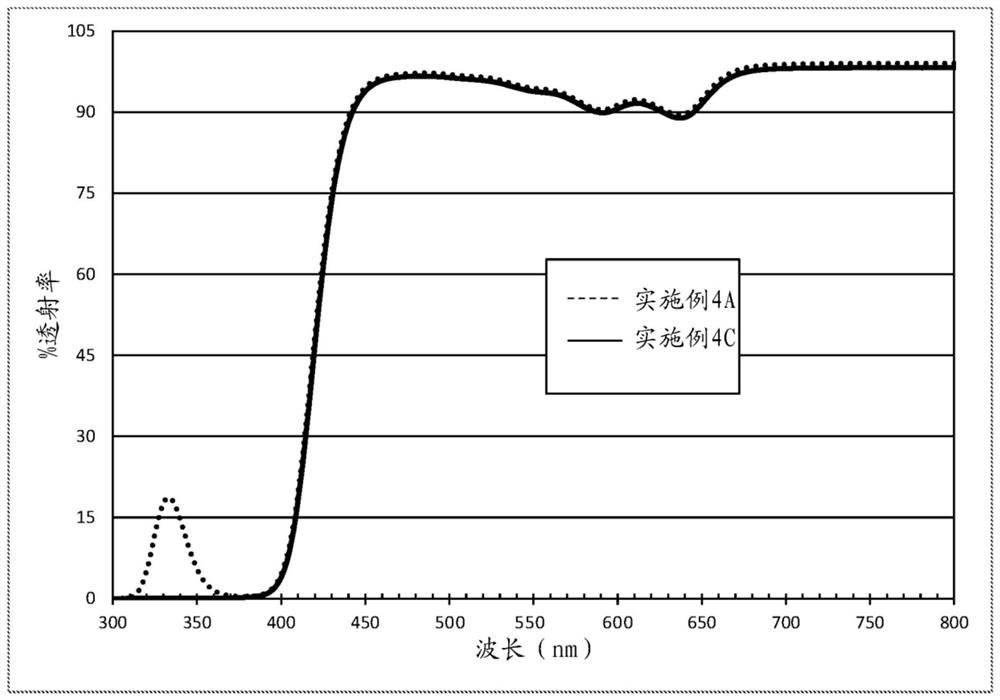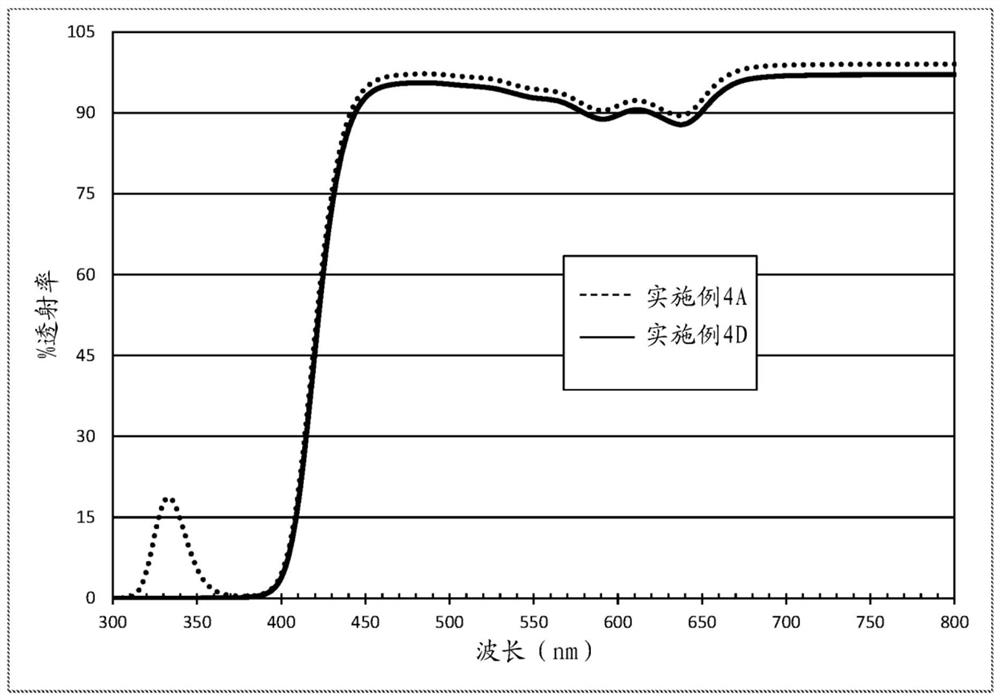Contact lens displaying improved vision attributes
A technology for contact lenses, visual attributes, used in reactive dyes, glasses/goggles, instruments, etc., to solve problems such as adverse effects on vision
- Summary
- Abstract
- Description
- Claims
- Application Information
AI Technical Summary
Problems solved by technology
Method used
Image
Examples
Embodiment 1
[0357] Embodiment 1—synthesis of 2-(2-cyanoacetamido) ethyl methacrylate (A) and methacrylic acid as shown in scheme 2 2-(2-cyano-2-(9H-thioxanthene-9-ylidene)acetamido)ethyl ester (B)
[0358]
[0359] Scenario 2
[0360] Stir methyl cyanoacetate (40 g, 0.4037 mol) and 25 mL of dichloromethane in a 500 mL three-necked round bottom flask equipped with a reflux condenser under nitrogen. 2-Aminoethanol (23.8 g, 0.3897 mol, ca. 0.97 eq.) was added to the solution via the addition funnel after which time the temperature rose and the methylene chloride began to reflux. After the exotherm ceased, external heat was applied to continue gentle reflux for a total of two hours, after which no ethanolamine was observed by thin layer chromatography.
[0361] The reaction can also be performed at room temperature and is complete within a few hours.
[0362] The mixture was cooled to room temperature, and all methylene chloride was evaporated under reduced pressure. The residual oi...
Embodiment 2
[0365] Embodiment 2—synthesis of 2-(2-cyanoacetamido) ethyl methacrylate (F) and N-(2-(2- Cyano-2-(9H-thioxanthene-9-ylidene)acetamido)ethyl)methacrylamide (G)
[0366]
[0367] Option 3
[0368] Stir methyl cyanoacetate (22 g, 0.22 mol) and 250 mL of dichloromethane in a 500 mL three-necked round bottom flask equipped with a reflux condenser under nitrogen. The solution was cooled in a water bath, and 1,2-diaminoethane (12 g, 0.2 mol, about 0.9 eq.) was added to the mixture. As the reaction progressed, the mixture became increasingly heterogeneous and the product fell out of solution. After stirring at room temperature for four hours, the volatiles were evaporated under reduced pressure, and the residue was washed with ethyl acetate on a sintered glass funnel and dried at 50 °C before further use. 1 H NMR (500MHz,D 2 O)δ2.74(2H,t,CH 2 NH 2 ),3.29(2H,t,CH 2 NH),3.38(2H,s,CH 2 CN).
[0369] 2-Aminoethylcyanoacetamide (12.7 g, 0.1 mol) and 12.0 g of sodium carbona...
Embodiment 3
[0371] Embodiment 3—Synthesis of 2-(2-cyanoacetoxy) ethyl methacrylate (K) and methacrylic acid as shown in scheme 4 2-(2-cyano-2-(9H-thioxanthene-9-ylidene)acetoxy)ethyl ester (L)
[0372]
[0373] Option 4
[0374] 2-(2-Cyanoacetoxy)ethyl methacrylate (K) was prepared by coupling cyanoacetic acid with 2-hydroxyethyl methacrylate as follows. Cyanoacetic acid (9 g, 0.106 mol) and 13 g of 2-hydroxyethyl methacrylate (HEMA) were stirred in 250 mL of dichloromethane, and ethyldimethylaminopropylcarbodiimide hydrochloride (EDC ) (20 g, 0.104 mol) was added to the suspension in 4 batches (5 g per batch). The mixture gradually became more homogeneous as the less polar derivative formed, and after the reaction was complete, the volatiles were evaporated under reduced pressure. The product was redissolved in a 25:75 (by weight) mixture of ethyl acetate and hexanes and extracted several times with deionized water to remove any remaining salts and unreacted HEMA. A small amount ...
PUM
| Property | Measurement | Unit |
|---|---|---|
| thickness | aaaaa | aaaaa |
| molecular weight | aaaaa | aaaaa |
| molecular weight | aaaaa | aaaaa |
Abstract
Description
Claims
Application Information
 Login to View More
Login to View More - R&D
- Intellectual Property
- Life Sciences
- Materials
- Tech Scout
- Unparalleled Data Quality
- Higher Quality Content
- 60% Fewer Hallucinations
Browse by: Latest US Patents, China's latest patents, Technical Efficacy Thesaurus, Application Domain, Technology Topic, Popular Technical Reports.
© 2025 PatSnap. All rights reserved.Legal|Privacy policy|Modern Slavery Act Transparency Statement|Sitemap|About US| Contact US: help@patsnap.com



